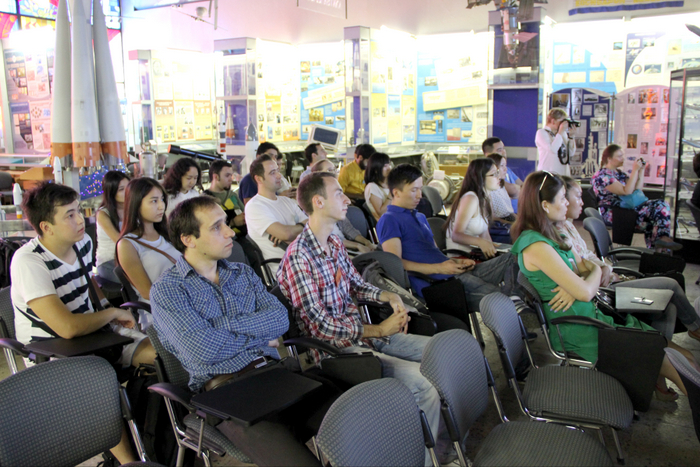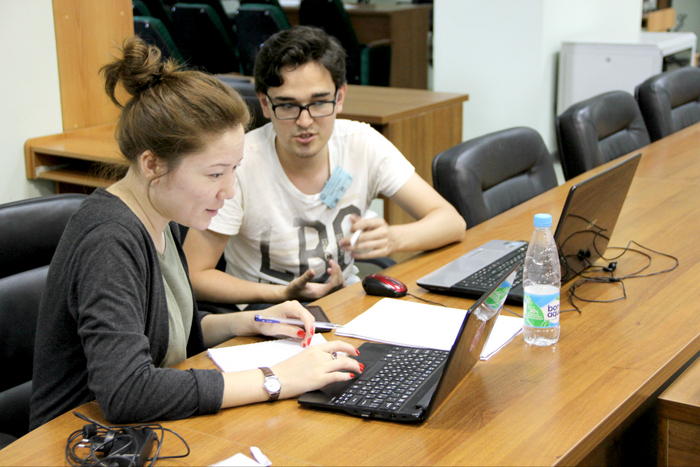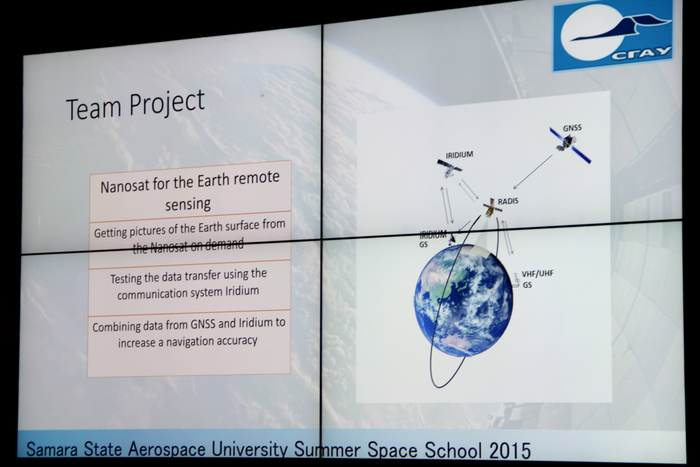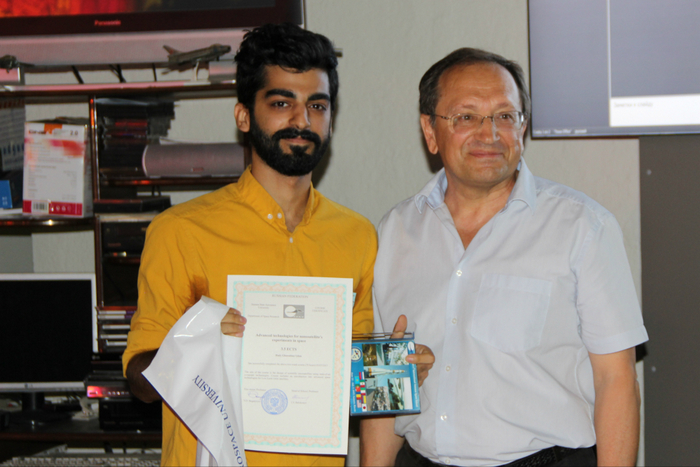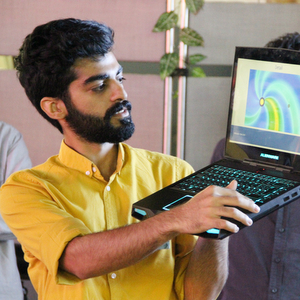
English > News
SSAU teachers and students shared experience of the nanosatellites design
13.07.2015, 17:34
XI International Summer Space School “Advanced Space Technologies and Experiments in Space. From Mission Idea to Project of Nanosatellite” took place in Samara State Aerospace University from June 22, 2015 to July 3, 2015.
For two weeks students from Italy, the United States of America, Portugal, Japan, Romania, Mexico, Colombia, Kazakhstan and Russia worked on developing their own projects of nanosatellites.
For two weeks students from Italy, the United States of America, Portugal, Japan, Romania, Mexico, Colombia, Kazakhstan and Russia worked on developing their own projects of nanosatellites.
For the first week of lectures and practical exercises the participants studied the design theory of nanosatellites: flight mechanics, peculiarities of motion control and on-board systems. School participants used computer-aided design systems Altium Designer and ProEngineer to create the projects of nanosatellites and their systems.
The second week of training at the Summer Space School was devoted to the development of specific nanosatellites missions projects. The School participants were divided into two teams, each working on their own project.
Thus, a group led by Erin Griggs (PhD) from the University of Colorado (USA) prepared and defended the project “Remote Sensing of Atmospheric Density and Imaging Satellite” devoted to creation of a nanosatellite for the Earth remote sensing. According to the participants’ plan, such spacecraft can monitor the Earth atmosphere and transmit images of the Earth surface and scientific data using satellite orbital constellation Iridium.
The second project – “Monitoring of Ionospheric Scintillations on Equator Cubesat” was prepared by a group of students under the guidance of Hady Ghassabian, the student from the University of Padua (Italy), Jose Marcal, PhD-candidate from the University of Lisbon (Portugal), and Diego Gonzalez, the student of the National Autonomous University of Mexico. The developers believe that by means of nanosatellite it will be possible to collect data about the Earth ionosphere, as well as to study the impact of its changes on the navigation signals propagation.
Both teams developed Mission Requirements, determined the list of the necessary subsystems of the spacecraft, calculated link and mass budgets, selected the required components and created 3D models of nanosatellites. In addition, teams mapped out the next steps for the possible implementation of their projects.
According to Professor Igor Belokonov, the organizer of the Summer Space School, Head of SSAU Inter-University Department of Space Research, this year the study format itself has been changed: for the first time one week was devoted to independent work of the participants on their own projects. “Such form of education provides unique opportunities for communication and gives the possibility to count on the future joint projects. Moreover, this year there were many PhD-students among the School participants, who are already real researchers and who will tell about SSAU capabilities in their universities upon their return. This may stimulate our further cooperation”, noted Igor Belokonov.
All lectures, practical trainings and projects defence within the framework of the Summer Space School were performed in English. The participants received international certificates upon the School graduation.
Opinions of participants of XI International Summer Space School:
Opinions of participants of XI International Summer Space School:
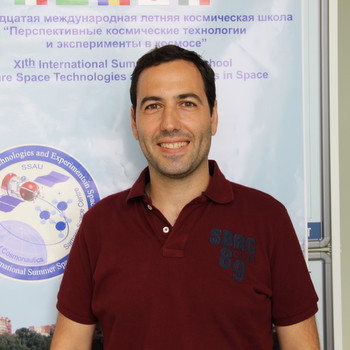
Jose Marcal, Portugal, the University of Lisbon:
- I am a PhD-candidate at University of Lisbon, I am doing research on algorithms for GNSS receivers (note: GNSS – Global Navigation Satellite Systems). I decided to come to the School, firstly, because I work with satellite navigation, but only at the ”ground” level that is receivers, and I was curious about the “satellite” level. Samara State Aerospace University is a good reference in satellites science, there are good professors here, and it was interesting to work with them. Perhaps we will collaborate in the future. I acquired unique knowledge in the field of development of a nanosatellite project and its mission.
Speaking about Samara - it was a surprise! The city is just a bit smaller than my city (note: Lisbon). I look forward coming in three years at the World Football Cup in Samara and see how it developed.
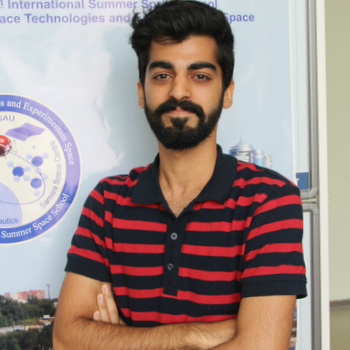

Hady Ghassabian, Italy, the University of Padua:
- I study aerospace engineering; I am a last-year student. I specialize in space robotics systems. When I found out that Samara has Summer School in space sector, I was very happy and decided to go here, since I knew from before that Samara is a space centre, which produces carrier rockets “Soyuz”. We studied together with the international students and worked together on the project – it is a really good opportunity.
I liked Samara State Aerospace University; here are very good professors and lecturers, and students with high background. I hope that we will be able to cooperate with Russian scientists in the space industry in the future.
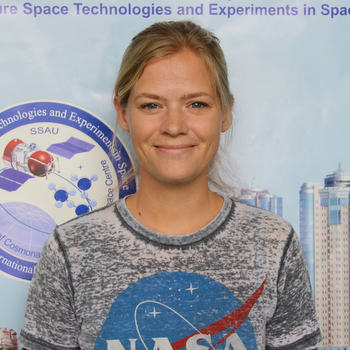

Erin Griggs, USA, the University of Colorado:
- My field is satellite navigation systems and astrodynamics. I have got acquainted with a new part of aerospace industry in SSAU, which I had not previously encountered. I usually work with big satellites, but here we have studied nanosatellites, and it was very interesting to try to develop a nanosatellite project in a short period of time.
I would like to note that faculty are very knowledgeable, and students are accommodating and friendly in SSAU. We were shown around Samara – it is a beautiful city: Volga, embankment and architecture. We have seen a carrier rocket “Soyuz” – it is impressive. Someday I definitely will be go on the rocket launch!
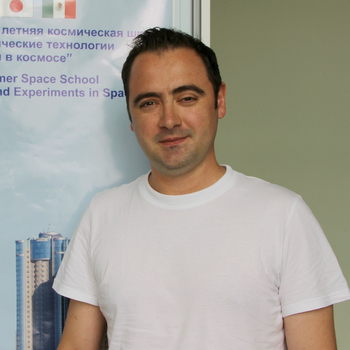

Dascal Paul Vladut, Romania, Technical University of Cluj-Napoca:
- I study radioengineering at the Technical University of Cluj-Napoca. I am the last year PhD student and my research is related to nanosatellites communication, ground stations and software-defined radio. For me Summer Space School here is a great opportunity to compare what Russian and European students study.
There are no aerospace programs at my university, we do not build satellites – we just receive data from it. I liked all the lectures very much, because they were given by the people who actually create nanosatellites.
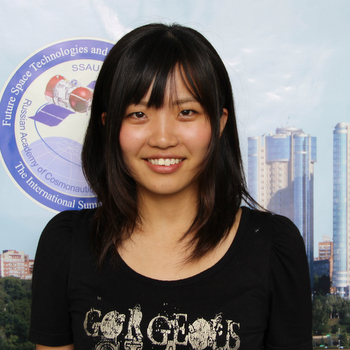

Anna Kawano, Japan, Kyushu Institute of Technology:
- I study electronics and do a research on the solar panels of spacecraft at the Master's program in Kyushu Institute of Technology. My research advisor told me to come to Samara for participation in the Summer Space School. In particular, I liked the work with Altium Designer program on practical training here.
